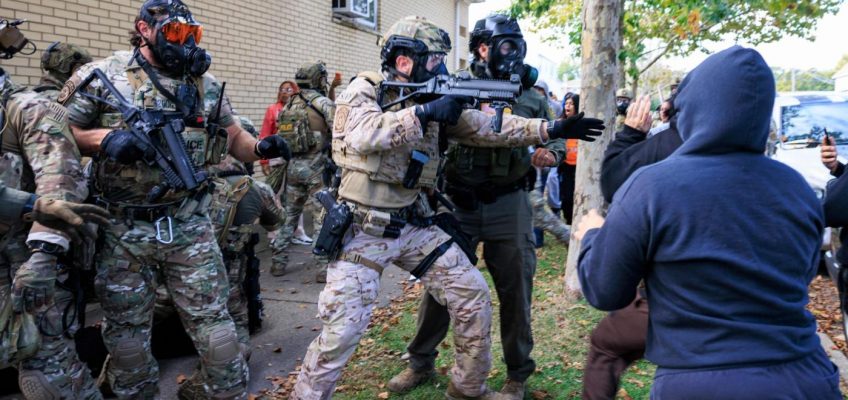By CARA ANNA
KALSOY ISLAND, Faroe Islands (AP) — The tiny Faroe Islands in the north Atlantic could be a poor choice for travelers with vertigo, seasickness or a fear of enclosed spaces. There are crumbling cliffs, sudden gale-force winds and hillsides so steep that even the sheep can tumble.
Related Articles
The vacation spots you keep returning to, from Zion to the ‘very best beach’ in Hawaii
Sip your way through California’s Midpeninsula Wine Trail
A Theodore Roosevelt library is opening soon. Visitors must pack a bag for North Dakota
Greece’s famed Parthenon free of scaffolding for first time in decades
Experts lead tours uncovering Mexico’s hidden ancient sites
Three tourists disappeared over two days in September. Police told the media their last locations were near a well-known waterfall that drops into the sea. Be careful, a shaken staffer at the site’s entrance said days later. “Come back.”
The risks come with landscapes so dramatic that one became the site for James Bond’s end in “No Time to Die.” Now the Faroe Islands, a self-governing territory under Denmark, like Greenland, are trying to handle a growing number of travelers also drawn by bird-watching, adventurous eating and “coolcations” as global temperatures rise.
Its sure-footed residents once hiked over mountain passes and maneuvered wooden boats onto rocky shores just to visit church or each other. Unlike tourists, they know when to stay away from hiking trails alongside unprotected cliffs, and how disorienting sudden fogs can be.
“When you make a mistake here, nature usually wins,” a food truck vendor at one popular site said.
It’s easier than ever to learn that lesson while exploring the Faroe Islands, which for now are largely free of the zip-lined commercialization of one of its nearest neighbors, Iceland.
A growing network of undersea tunnels, including what’s called the world’s first undersea roundabout, are helping to link the 18 islands. Rugged isolation is giving way to smooth highways, and Airbnb has hundreds of listings among a population of over 50,000 people.
A new co-chairmanship of the Arctic Council is bringing more global visibility, along with a stunning run toward its first soccer World Cup.
‘Closed for maintenance’
Authorities are trying to both encourage tourism and protect the Faroe Islands from it. A yearly “closed for maintenance” program began in 2019, with volunteers from around the world chosen to help with anti-erosion efforts, path upkeep and other work. The national museum later launched a project to protect lands and biodiversity.
Tourists disembark from a ferry on Kalsoy Island in Faroe Islands, Sept. 8, 2025. (AP Photo/Cara Anna)
And this year, the tourism office introduced self-navigating tours that steer visitors from the churned-mud trails of the most popular spots to lesser-known areas.
Tour routes are revealed online as you go along. One sends users to a seaside village that hosts a popular music festival, followed by a tiny botanical garden, a fjord-side memorial to a deadly shipwreck and a small forest plantation enjoyed by Faroese on the otherwise treeless islands.
The last leg was along a one-lane road that at times had no guardrail between its lack of shoulder and the drop to the sea. Sheep walked along one stretch, another reason for visitors to stay alert in the stunning surroundings. (There’s a police number to call if a driver hits one.)
A map of the Faroe Islands is on display in Sydradalur, Faroe Islands, Sept. 4, 2025. (AP Photo/Cara Anna)
Visitors who love the outdoors can easily spend a week in the Faroe Islands cycling, fishing, trying an emerging sauna scene, eating sushi from locally farmed salmon and shopping for newly knitted wool sweaters. In the summer, boat tours include music concerts inside a sea cave or puffin-watching.
Winters are fierce — a ferryman said a storm two years ago ripped the roof from an old house next to the AP’s seaside rental cottage in Sydradalur — but interest in the islands is starting to extend the peak tourist season into October.
Ferocious winds and bewildered sheep
Villages, especially in the wilder northern region, can have just a handful of residents. There are few tourist-focused businesses outside the capital, Torshavn, but the village of Gjogv has a welcoming guesthouse and cafe, and the village of Fuglafjordur has a charming main street and visitors’ center. English is widely spoken and displayed.
A sign warns tourists in Gjogv at the Faroe Islands, Sept. 8, 2025. (AP Photo/Cara Anna)
Just be prepared for rain in the often-shifting weather, with webcams available from popular locations.
And mind the guidance, even scolding, that some Faroese have posted for tourists who overstep.
“Due to unmannerly behavior and lack of quietness on the graves, the cemetery is closed,” said a sign on the church in the village of Saksun.
“Do not wash your shoes in the sink!” said a sign at the ferry stop on Kalsoy island. A worker at the island’s unexpected Thai restaurant — a sign of the small but growing migrant population — estimated that about 200 tourists a day came to a much-photographed lighthouse there this summer.
The view from an Airbnb in Sydradalur on Kalsoy Island in Faroe Islands, Sept. 4, 2025. (AP Photo/Cara Anna)
The official Visit Faroe Islands doesn’t hold back, either, as it balances the appeal of growing tourism with the responsibility of warning travelers. Finding equilibrium is a long practice in the nation whose fishing-dominated economy requires cordial ties with a range of countries including Russia and China.
“Stormcation,” the Visit Faroe Islands site declares, but adds: “Ferocious wind can overturn cars, fling bicycles, wheelbarrows — and sheep — or anything else that’s not anchored down.”




